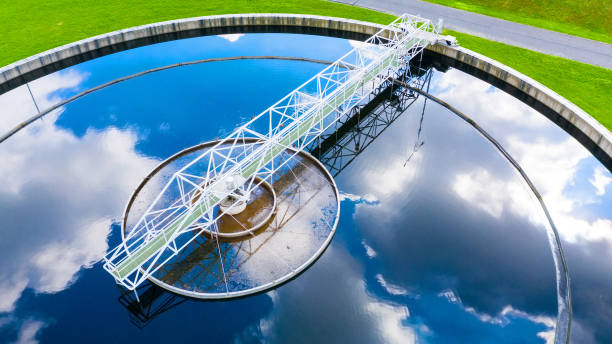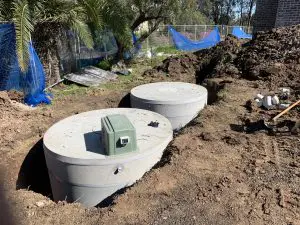Navigating the wastewater management system in New South Wales (NSW) can seem like a daunting task, whether you’re a homeowner looking to install a new system or a developer managing a large-scale project. Understanding the process and requirements can simplify your journey. This guide will walk you through the generic application process for wastewater solutions through NSW councils, highlight key considerations, and provide insights to ensure a smooth and compliant experience.
Understanding Wastewater Solutions in NSW
Wastewater management is a critical aspect of maintaining public health and environmental sustainability. In NSW, councils are responsible for overseeing and regulating wastewater systems to ensure they meet local and state standards. These systems include various solutions such as septic tanks, aerated treatment systems, and on-site disposal systems.
Types of Wastewater Systems
Septic Tanks: These are commonly used for small to medium-sized properties. They treat wastewater through sedimentation and bacterial digestion.

Aerated Treatment Systems: These systems introduce air into the wastewater, enhancing the breakdown of organic matter. They are suitable for properties with higher wastewater volumes or where soil conditions are poor.
On-site Disposal Systems: These include trenches or beds that allow treated effluent to percolate into the soil. Proper design and maintenance are crucial to prevent contamination.
The Application Process
Step 1: Initial Assessment
Before starting your application, it’s essential to conduct an initial assessment of your property’s suitability for different wastewater solutions. Factors to consider include soil type, land size, proximity to water sources, and existing infrastructure. Many councils offer preliminary assessments or guidance to help you determine the most appropriate system for your site.
Step 2: Consult with Council
Once you’ve identified a suitable wastewater system, the next step is to consult with your local council. Councils in NSW provide specific guidelines and requirements for wastewater management, which can vary depending on your location. Contact the council’s environmental health or planning department to discuss your project and obtain any necessary forms or documents.
Step 3: Prepare Your Application
The application process typically involves several key components:
Application Form: Complete the council’s application form, providing detailed information about your property and the proposed wastewater system.
Site Plan: Submit a site plan showing the location of the proposed system, including distances from buildings, water sources, and property boundaries.
System Design: Provide detailed plans or specifications for the wastewater system, often prepared by a qualified engineer or technician. This should include how the system will be installed and maintained.
Supporting Documents: Include any additional documents required by the council, such as proof of land ownership, environmental impact assessments, or reports from soil tests.
Step 4: Submit Your Application
Submit your completed application to the council. Depending on the complexity of your project, the processing time can vary. Councils may conduct site inspections or request additional information before making a decision.
Step 5: Approval and Installation
Once your application is approved, you will receive a permit or approval notice. This allows you to proceed with the installation of the wastewater system. Ensure that the installation is carried out by a licensed contractor to comply with council regulations and standards.
Step 6: Final Inspection and Certification
After installation, a final inspection by the council may be required to ensure the system is functioning correctly and meets all regulatory standards. Once the system passes the inspection, you will receive a certification or approval for use.
Key Considerations
Environmental Impact
One of the primary concerns with wastewater systems is their environmental impact. Properly designed and maintained systems prevent contamination of groundwater and surface water. Councils assess the potential environmental impacts during the application process and may require additional measures or safeguards.
Maintenance Requirements
All wastewater systems require regular maintenance to ensure their efficient operation and longevity. This includes periodic inspections, cleaning, and repairs. Councils may provide guidelines on maintenance schedules and responsibilities.
Compliance with Regulations
NSW has stringent regulations governing wastewater management. Ensure your system complies with both local council requirements and state legislation. Non-compliance can lead to fines, penalties, or even mandatory removal of the system.
Cost Considerations
The cost of installing and maintaining a wastewater system can vary significantly depending on the type of system and property specifics. It’s important to budget for both initial installation and ongoing maintenance costs. Councils often provide cost estimates or advice on financial planning for wastewater solutions.
By following this guide, you can navigate the complexities of wastewater management with confidence and ensure a compliant, efficient solution for your property.
Key Takeaways
Initial Assessment: Conduct a thorough site assessment to determine the most suitable wastewater system for your property.
Consult with Council: Engage with your local council early in the process to understand specific requirements and obtain necessary forms.
Complete Application: Prepare a detailed application including site plans, system design, and supporting documents.
Follow Regulations: Adhere to local and state regulations to avoid non-compliance issues.
Maintenance: Regular maintenance is crucial for the longevity and efficiency of your wastewater system.
Related Posts
- The Economics of Septic Systems: Cost Savings and Long-Term Investments
- Why is Wastewater Treatment Important?
- Where Are Septic Tanks Used
- What Are The Three Types Of Pump Wells?
- AWTS Installation: What to Expect and How to Choose the Right Installer
- How to maintain a septic tank
- How Do Grey Water Recycling Systems Work
- Tank vs. Sewer System: Which Is Better for Sydney Homes?




